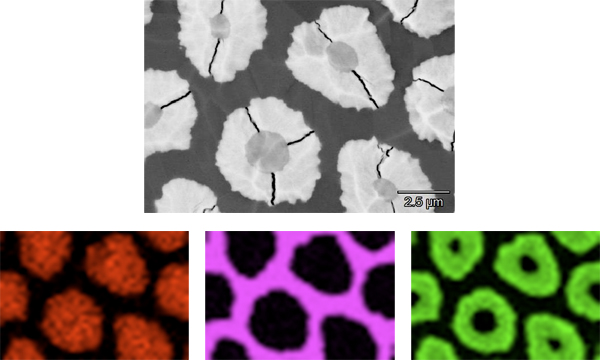Energy-dispersive X-ray (EDX) spectroscopy

Compositional analysis technique. The high energy electron beam ejects electrons from inner-shell atomic orbitals in the sample. The resulting vacancies are filled by electrons from higher energy shells; electron energies lost during these transitions are emitted as X-rays. The transitions, and hence X-rays, have energies that are characteristic of the atomic species. Therefore, measuring the X-ray spectrum allows identification of the sample composition. It is typically sensitive down to levels of about 0.5 to 1 atomic percent. Similarly to backscattered electrons, the detected X-rays normally derive from a large, sub-surface interaction volume that can measure on the order of a micrometre in size. This often limits the spatial resolution of EDX in the SEM. Quantification is readily possible, although approaches must be chosen to account for effects of the atomic number on emission, and X-ray absorption and X-ray fluorescence by the sampe. While lighter elements can be detected, e.g. from boron or carbon upwards, sensitivity to them is low, thus making quantification difficult. In general, spectral analysis must account for possible artefacts, such as peak overlap from the limited spectral resolution. By taking spectra at sequential analysis points, compositional line-scans and maps can be made. Recent advances in EDX detector technology, with the introduction of Si-drift detectors that can cope with higher count rates, allow faster and more accurate mapping.